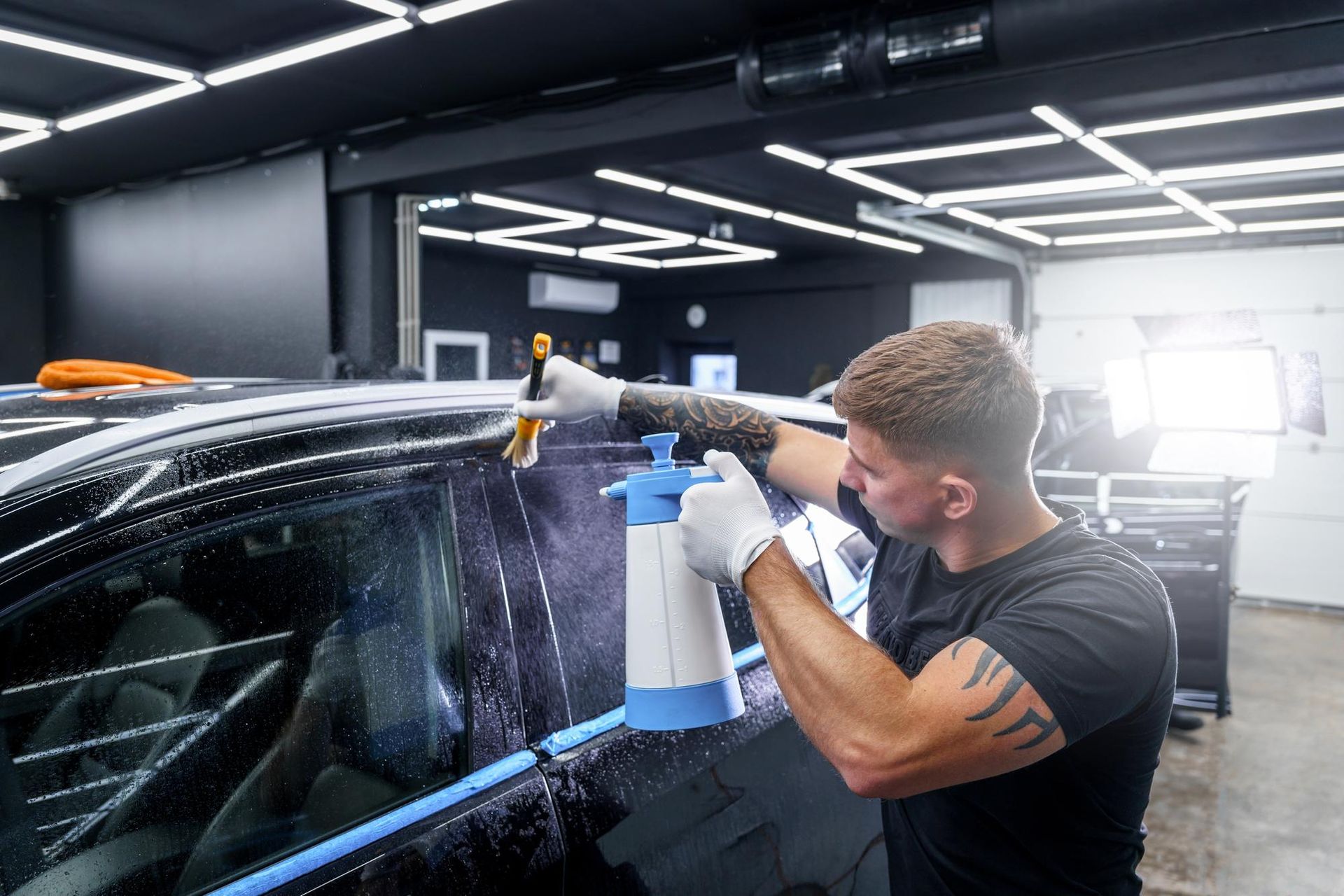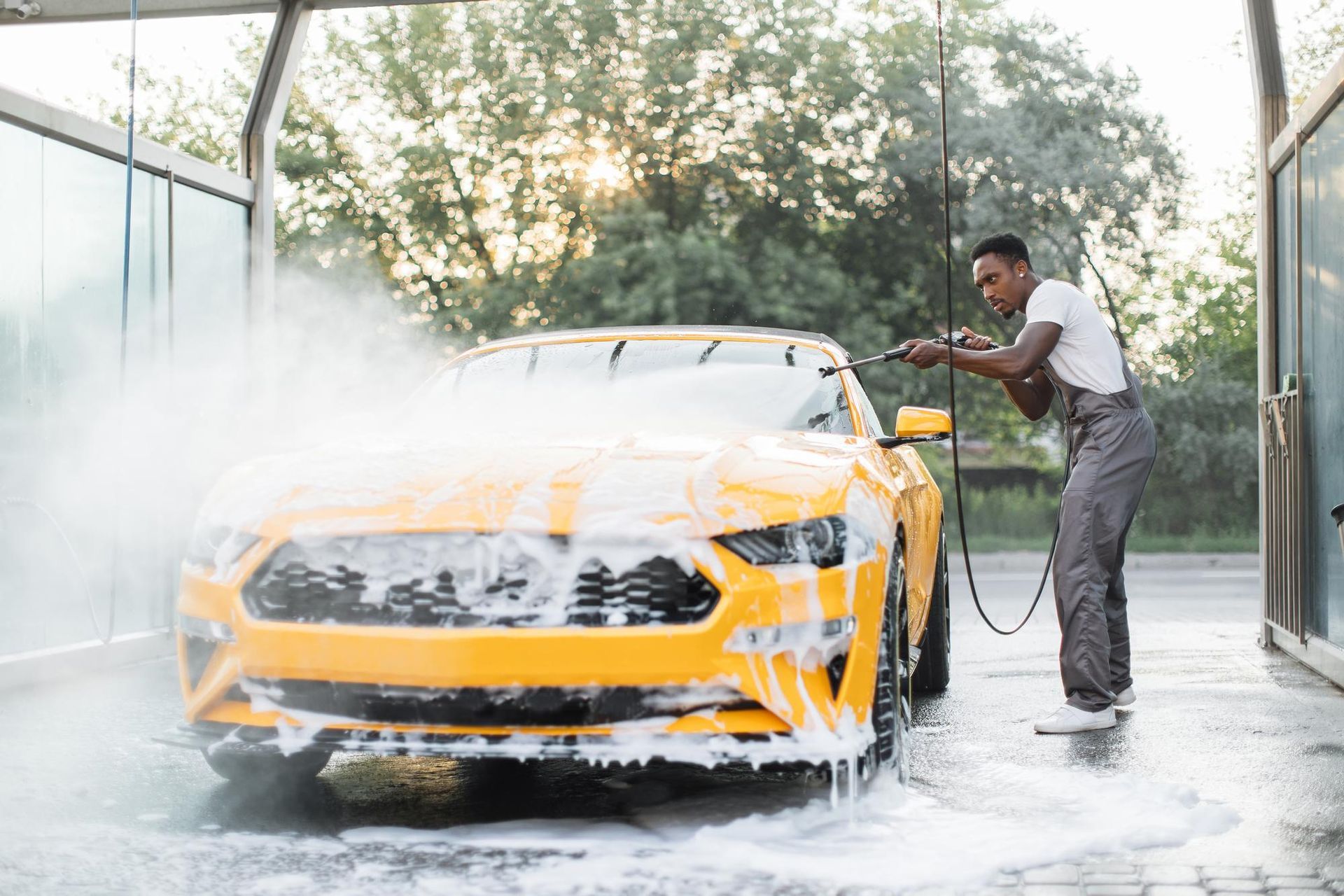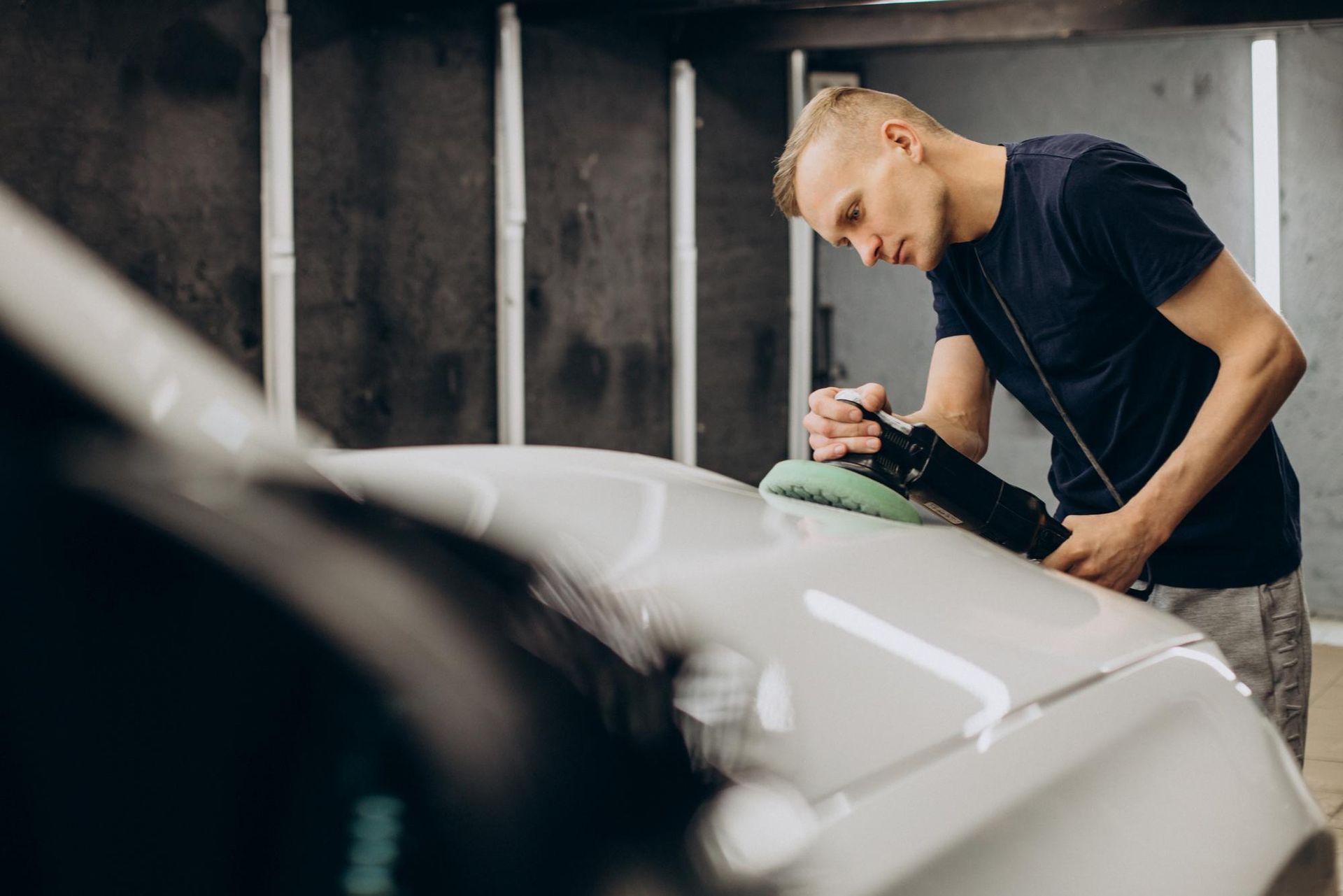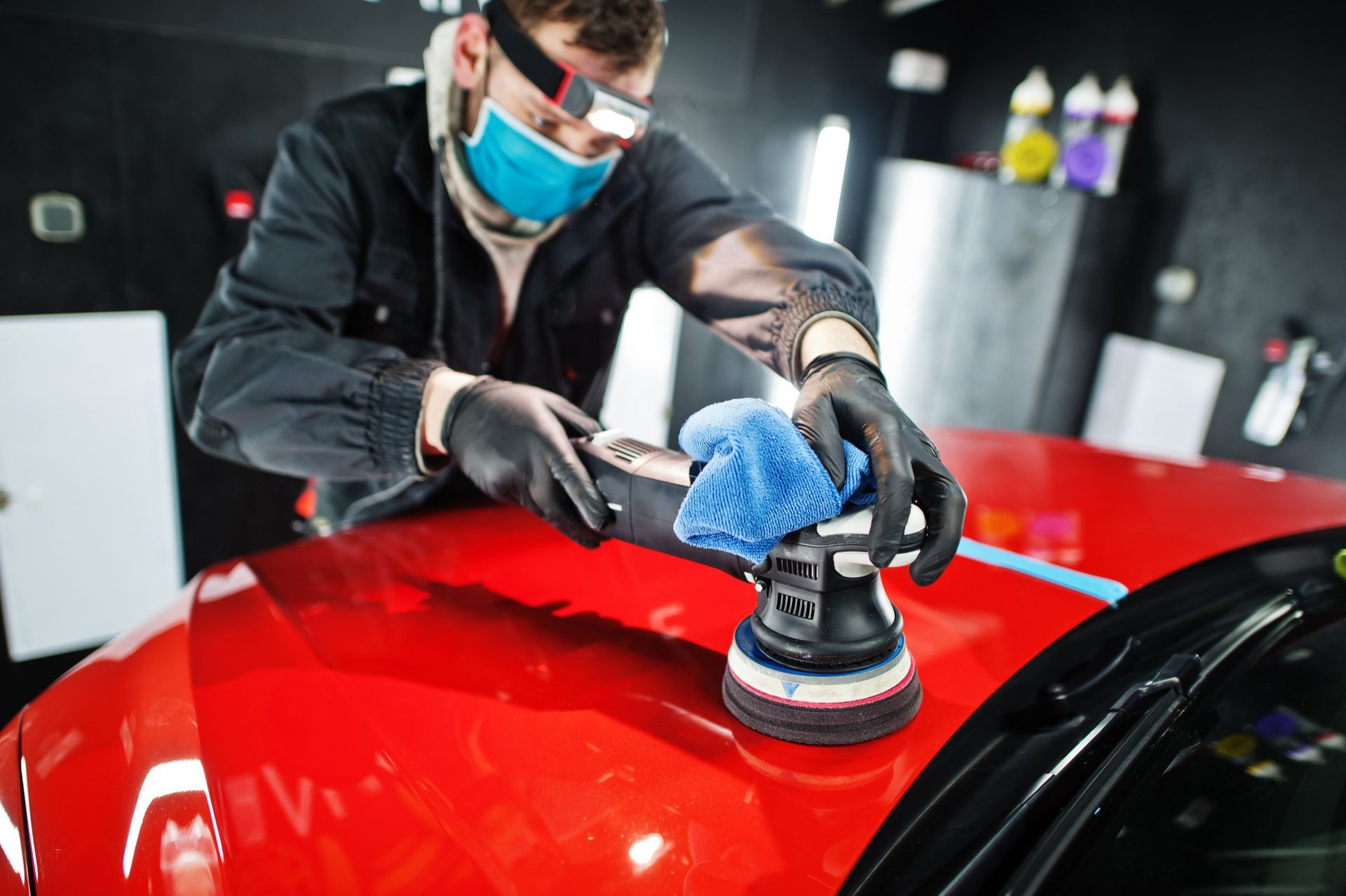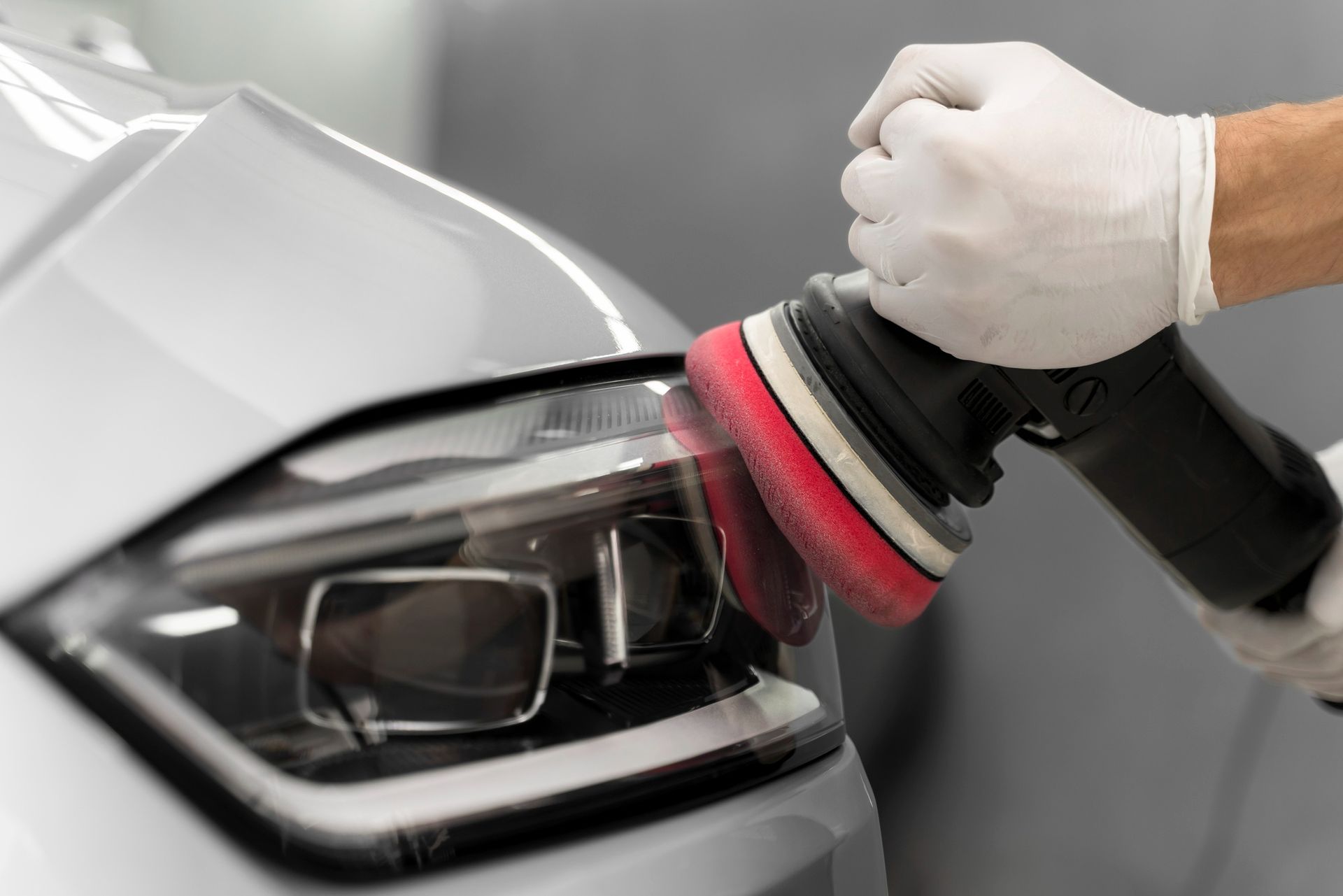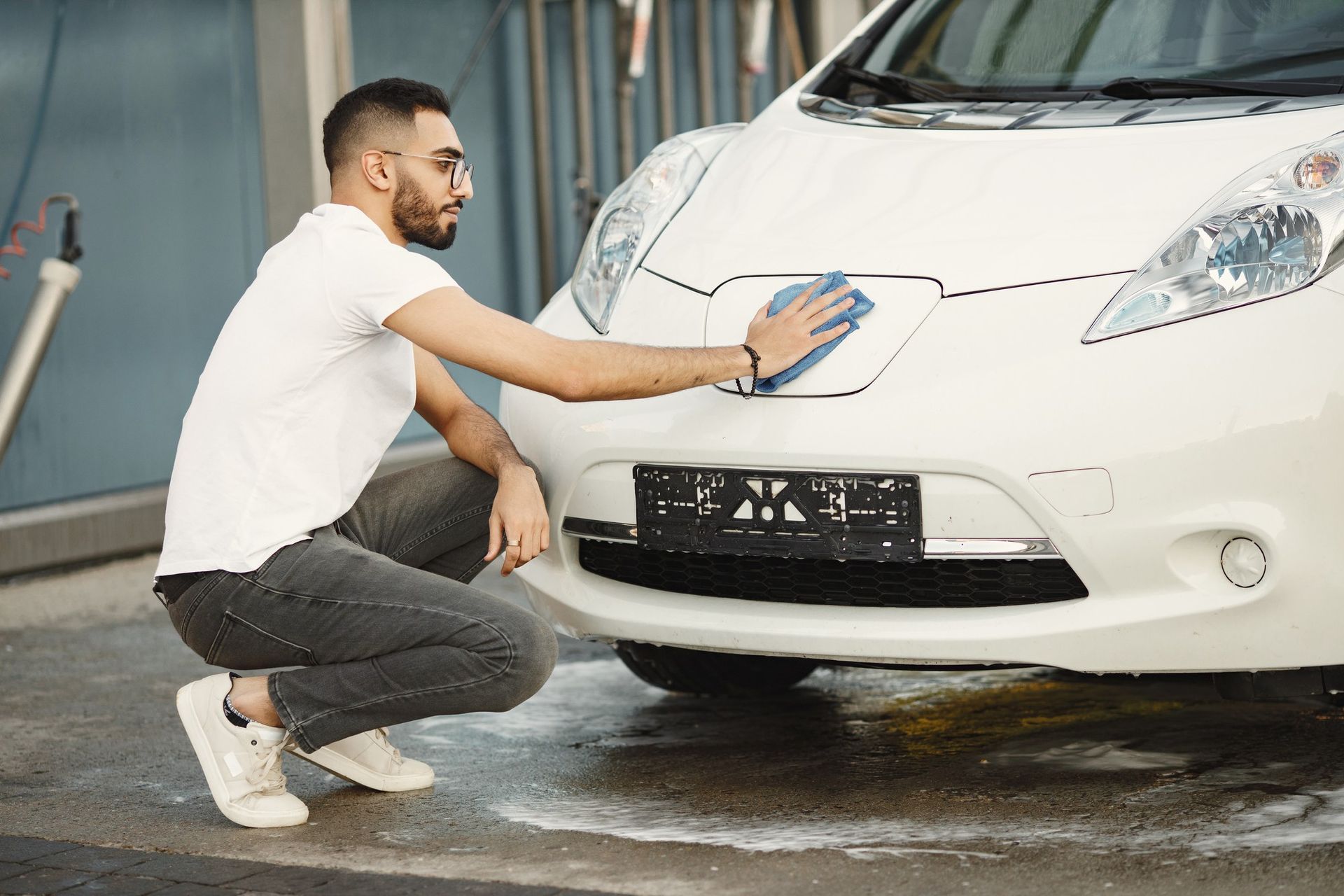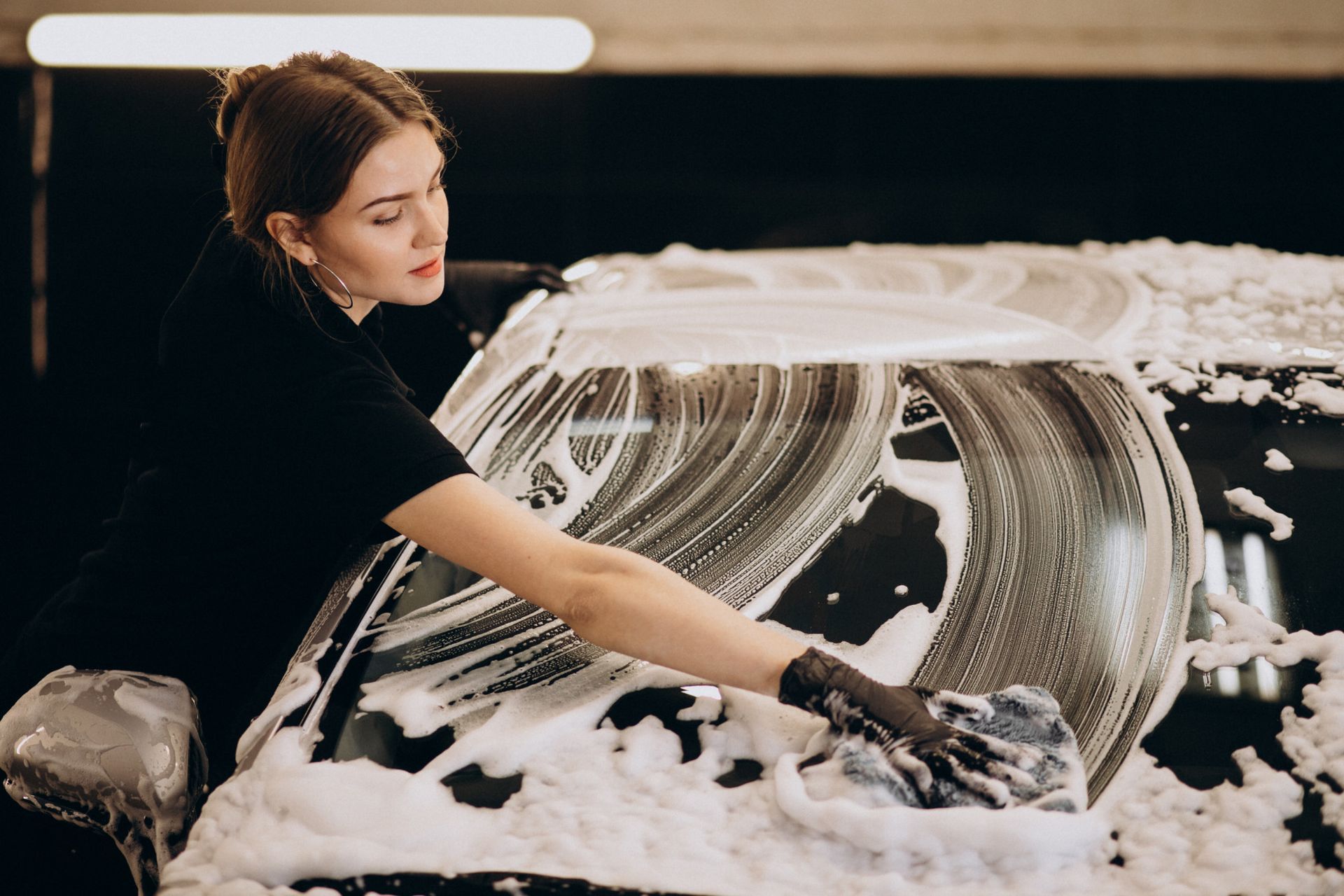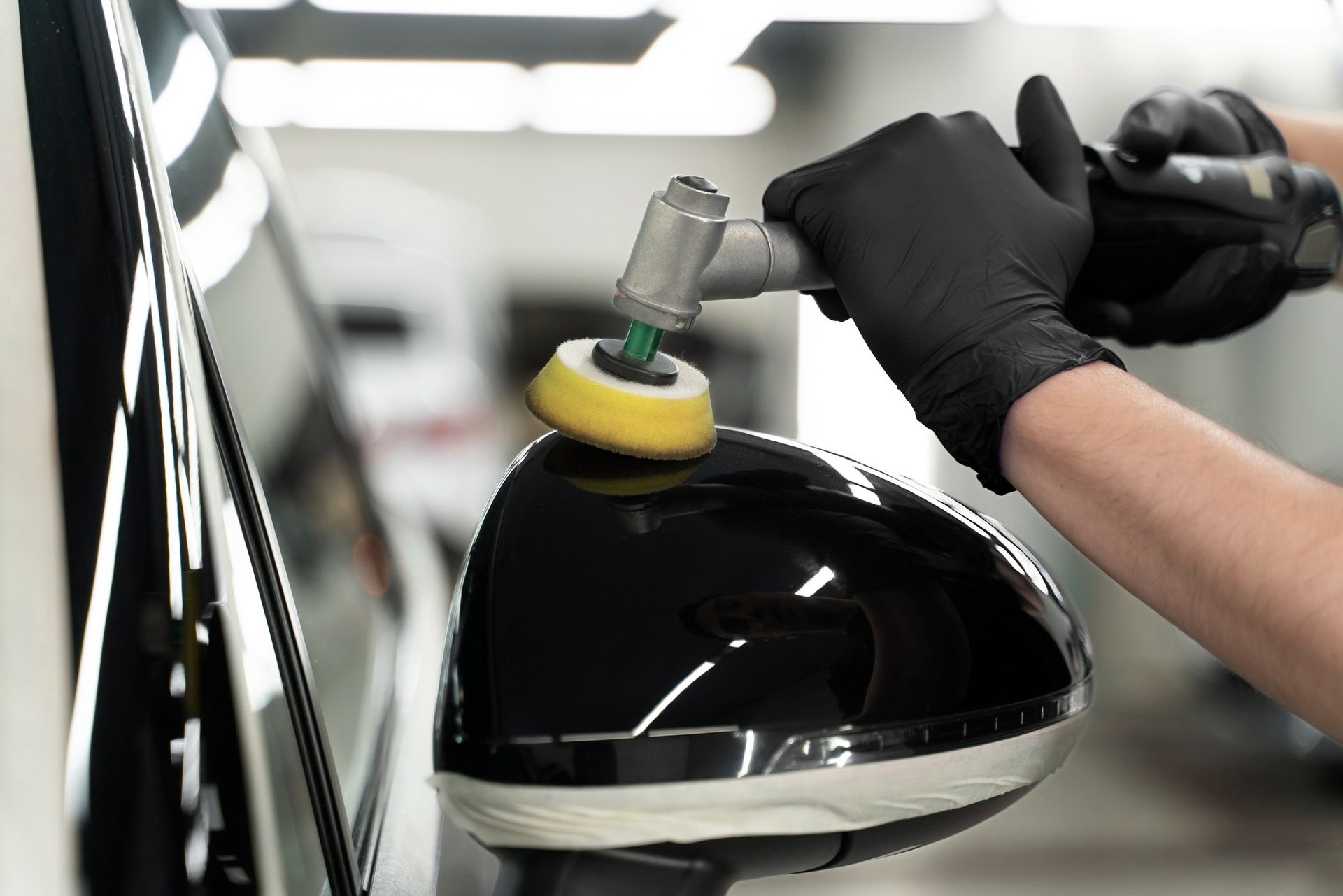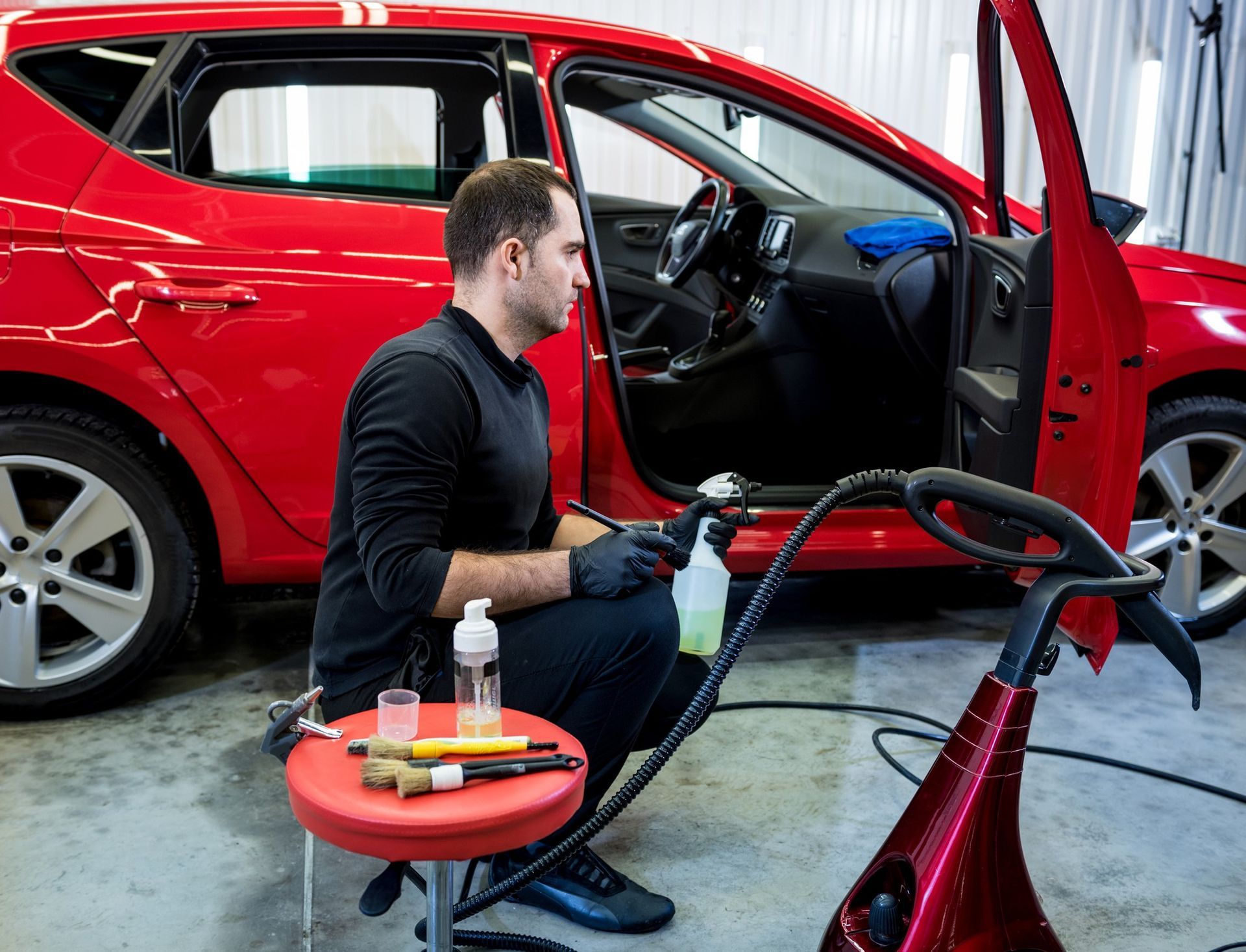Unlock the Secrets of Professional Car Detailing: Techniques, Tools, and Maintenance Tips
Are you tired of looking at your dull and dirty car? Do you want to bring back that showroom shine and make your vehicle look brand new again? If so, then car detailing is the solution for you. In this blog post, we will unlock the secrets of professional car detailing, providing you with techniques, tools, and maintenance tips to achieve stunning results.
Introduction to Car Detailing
- What is Car Detailing? Car detailing goes beyond a regular car wash. It is a thorough and meticulous process of cleaning, restoring, and protecting your vehicle, both inside and out. It involves cleaning every nook and cranny, removing dirt, stains, and imperfections, and enhancing the overall appearance of your car.
- Importance of Car Detailing Car detailing is not just about aesthetics. It is also essential for maintaining the value and longevity of your vehicle. Regular detailing helps protect your car's paintwork, prevent rust and corrosion, and preserve the interior materials, ensuring that your car stays in top condition for years to come.
- Benefits of Regular Car Detailing Aside from maintaining your car's value, regular detailing offers numerous benefits. It improves the overall look and feel of your vehicle, enhances driving comfort, and creates a healthier and more pleasant environment inside your car. Additionally, a well-maintained and clean car can leave a lasting impression and boost your confidence.
- Difference between Car Detailing and Car Wash While a car wash focuses on removing dirt and grime from the exterior, car detailing is a more comprehensive process. It involves deep cleaning, restoration, and protection, addressing both the interior and exterior of the vehicle. Car detailing aims to bring back the shine and luster of your car, while a car wash simply cleans the surface.
In the upcoming sections of this blog post, we will delve deeper into the world of car detailing, exploring different
types of detailing services, techniques, tools, and products. Whether you decide to hire a professional or take on a DIY approach, we will provide you with the knowledge and tips to achieve professional-level results. So, get ready to unlock the secrets of professional car detailing and transform your car into a stunning masterpiece. Stay tuned!
Introduction to Car Detailing
Car detailing is more than just a simple car wash. It is a meticulous process of cleaning, restoring, and protecting your vehicle, both inside and out. Whether you are a car enthusiast or simply someone who takes pride in their vehicle, car detailing is an essential aspect of car maintenance that should not be overlooked. In this section, we will explore what car detailing entails, its importance, and the benefits it brings.
Car detailing involves a comprehensive cleaning and restoration process that goes beyond what a
regular car wash can achieve. It focuses on removing dirt, grime, stains, and imperfections from every inch of your vehicle, ensuring that it looks its absolute best. This includes not only the exterior but also the interior, engine bay, and even the tire and wheel areas.
The goal of car detailing is to bring back the showroom shine and make your vehicle look as close to new as possible. It involves a combination of various techniques, tools, and products to achieve exceptional results. From hand washing and paint correction to interior vacuuming and leather treatment, car detailing covers every aspect of your vehicle's appearance.
One of the primary reasons why car detailing is important is that it helps protect your vehicle from the elements and everyday wear and tear. The exterior of your car is constantly exposed to various contaminants such as dirt, road salt, bird droppings, and UV rays, all of which can damage the paintwork. Regular detailing ensures that these contaminants are removed and that your car's paint is properly protected.
Furthermore, car detailing helps maintain the value of your vehicle. A well-maintained car with a clean and pristine appearance will have a higher resale value compared to a neglected or poorly maintained one. Whether you plan to sell your car in the future or simply want to keep it looking great for years to come, regular detailing is a wise investment.
Apart from the practical benefits, car detailing also offers aesthetic advantages. When your car looks clean, shiny, and well-cared for, it enhances your overall driving experience. You feel a sense of pride and satisfaction every time you get behind the wheel. Plus, a clean and fresh-smelling interior creates a more pleasant environment for you and your passengers.
Car detailing is a comprehensive cleaning, restoration, and protection process that aims to bring your vehicle back to its original glory. It is not just a luxury for high-end cars; it is a necessary maintenance step for all vehicles. From enhancing the appearance and value of your car to providing a more enjoyable driving experience, car detailing offers a multitude of benefits. In the next sections, we will delve deeper into the different types of car detailing services, techniques, tools, and maintenance tips to help you achieve professional-level results. So, let's continue our journey into the world of car detailing.
Types of Car Detailing Services
When it comes to car detailing, there are various services available to address different aspects of your vehicle's appearance. In this section, we will explore the different types of car detailing services, including
exterior detailing, interior detailing, and engine bay detailing.
- Exterior Car Detailing: Exterior car detailing focuses on restoring and enhancing the appearance of the exterior surfaces of your vehicle. It involves a series of steps to deep clean, correct imperfections, and protect the paintwork. Let's take a closer look at some of the key techniques and processes involved in exterior car detailing:
- Hand Washing Techniques: Hand washing is the foundation of any exterior car detailing process. It involves using high-quality car shampoos and microfiber mitts to gently wash away dirt and grime from the surface of your vehicle. The goal is to achieve a thorough clean without causing any scratches or swirl marks.
- Paint Correction and Restoration: Paint correction is a crucial step in exterior car detailing, especially for older or heavily damaged vehicles. It involves removing imperfections such as swirl marks, scratches, and oxidation to restore the paintwork's clarity and shine. This can be achieved through various methods, including machine polishing, compounding, and wet sanding.
- Clay Bar Treatment: A clay bar treatment is another essential step in exterior car detailing. It involves using a specially formulated clay bar to remove embedded contaminants such as tar, tree sap, and industrial fallout from the paintwork. This process helps achieve a smooth and clean surface before moving on to the next steps.
- Waxing and Polishing: Waxing and polishing are the final steps in exterior car detailing. Waxing provides a protective layer to the paintwork, enhancing its shine and making it easier to clean in the future. Polishing, on the other hand, restores the paint's gloss and depth, further enhancing the overall appearance of your vehicle.
- Tire and Wheel Cleaning: Exterior car detailing also includes cleaning and treating the tires and wheels. This involves removing brake dust, dirt, and grime from the wheels, as well as applying a tire dressing to give the tires a rich, dark finish. Proper tire and wheel cleaning not only enhance the appearance but also help prevent corrosion and damage.
- Glass and Window Treatment:
Cleaning and treating the glass and windows is an important part of exterior car detailing. It involves using streak-free glass cleaners and microfiber towels to remove dirt, smudges, and fingerprints from the glass surfaces. Additionally, applying a hydrophobic glass coating can improve visibility during rainy conditions.
Interior Car Detailing
Interior car detailing focuses on cleaning and restoring the interior surfaces of your vehicle. It involves a thorough cleaning of the dashboard, seats, carpets, and other interior components. Let's explore some of the key techniques and processes involved in interior car detailing.
- Interior Vacuuming and Cleaning: The first step in interior car detailing is to thoroughly vacuum the interior, including the seats, carpets, floor mats, and crevices. This helps remove loose dirt, debris, and allergens from the surfaces. After vacuuming, a detailed cleaning process is carried out using appropriate cleaning solutions and brushes for different materials.
- Upholstery and Leather Cleaning: Cleaning and treating the upholstery and leather surfaces is an important part of interior car detailing. This involves using specialized cleaners and conditioners to remove stains, dirt, and grime from the seats and other upholstered surfaces. Treating the leather helps restore its suppleness and prevent cracking over time.
- Carpet and Floor Mat Cleaning: Carpet and floor mat cleaning is an essential aspect of interior car detailing, especially if they are heavily soiled or stained. This process involves using carpet cleaners, brushes, and steam cleaners to remove deep-seated dirt and stains. It helps revitalize the appearance of the carpets and floor mats, leaving them fresh and clean.
- Dashboard and Console Treatment: The dashboard and console areas often accumulate dust, dirt, and fingerprints. Interior car detailing includes cleaning and treating these areas to restore their appearance. This involves using appropriate cleaning solutions and microfiber towels to remove dirt and grime without causing any damage to the surfaces.
- Odor Removal and Air Freshening: Interior car detailing also addresses odors and ensures a pleasant, fresh-smelling interior. This can be achieved through various methods, such as using odor-neutralizing sprays, air fresheners, or even ozone treatments to eliminate lingering odors caused by spills, food, pets, or smoking.
Engine Bay Detailing
Engine bay detailing focuses on cleaning and restoring the engine compartment of your vehicle. While it may not directly impact the appearance of your car, it plays a crucial role in maintaining its overall condition and long-term performance. Here are some key techniques involved in engine bay detailing:
- Engine Cleaning and Degreasing: Engine cleaning and degreasing involve removing dirt, grease, and grime from the engine bay area. This is done using specialized degreasers, brushes, and pressure washers to safely clean the engine components. It is important to protect sensitive electrical connections and avoid excessive water exposure.
- Battery and Electrical Component Cleaning: During engine bay detailing, attention is given to the battery and electrical components. This includes cleaning the battery terminals, removing corrosion, and ensuring proper connections. It is essential to use appropriate cleaning solutions and take necessary precautions when working with electrical components.
- Engine Bay Dressing and Protection: After cleaning, applying an engine bay dressing helps enhance the appearance and protect the engine components. This involves using silicone-based or water-based dressings to give a clean and glossy finish to plastic, rubber, and other engine bay surfaces. It also helps prevent fading and cracking due to exposure to heat and environmental elements.
Car detailing offers a range of services that cater to different aspects of your vehicle's appearance. Whether you want to restore your car's exterior shine, rejuvenate the interior, or give your engine bay a thorough cleaning, there is a detailing service for every need. In the next section, we will explore the various techniques and tools used in car detailing to achieve professional-level results.
Car Detailing Techniques and Tools
Car detailing requires a combination of effective techniques and specialized tools to achieve professional-level results. In this section, we will explore some of the key techniques and tools used in car detailing, including proper washing and drying techniques, paint correction methods, interior cleaning tools, and essential detailing products and supplies.
Proper Washing and Drying Techniques
To ensure a thorough and safe cleaning process, it is important to follow proper washing and drying techniques. Here are some key techniques to keep in mind:
- Two-Bucket Method: The two-bucket method is a widely recommended technique in car detailing. It involves using two separate buckets—one filled with soapy water for cleaning and the other with clean water for rinsing the wash mitt or sponge. This helps prevent dirt and debris from being reintroduced to the paint surface, reducing the risk of scratching.
- Microfiber Towels and Wash Mitts: Microfiber towels and wash mitts are essential tools for car detailing. They are soft, lint-free, and highly absorbent, making them ideal for safely removing dirt and grime from the surface. Microfiber materials are less likely to cause scratches or swirl marks compared to traditional sponges or towels.
- Grit Guards and Foam Cannons:
Grit guards are accessories placed at the bottom of the wash buckets to trap dirt and debris, preventing them from being transferred back onto the wash mitt or sponge. Foam cannons are attachments that connect to a pressure washer and produce a thick foam that clings to the vehicle's surface, providing lubrication and encapsulating dirt for safer cleaning.
Paint Correction Techniques
Paint correction is a critical step in car detailing, especially for addressing imperfections such as swirl marks, scratches, and oxidation. Here are some common paint correction techniques:
- Understanding Swirl Marks and Scratches: Swirl marks and scratches are common paint imperfections that can dull the appearance of your vehicle. Swirl marks are circular or spiral-shaped fine scratches typically caused by improper washing or drying techniques. Scratches can vary in depth and severity and are often caused by contact with abrasive materials or objects.
- Machine Polishing and Compounding: Machine polishing and compounding are techniques used to remove swirl marks, scratches, and other imperfections from the paintwork. Machine polishers equipped with appropriate pads and compounds are used to gently abrade the surface, removing a thin layer of clearcoat to reveal a smoother and more uniform finish.
- Types of Polishers and Pads:
There are various types of polishers and pads available for paint correction.
Dual-action polishers are popular among enthusiasts and professionals as they provide a balance between cutting power and safety. Rotary polishers, on the other hand, are more aggressive and are typically used by experienced detailers for heavy paint correction. Different types of pads, such as cutting, polishing, and finishing pads, are used in conjunction with the polishers to achieve desired results.
Interior Cleaning Tools and Products
Cleaning the interior of your vehicle requires specialized tools and products to effectively remove dirt, stains, and odors. Here are some essential tools and products for interior car detailing:
- Vacuum Cleaners and Steam Cleaners: A high-quality vacuum cleaner is essential for thorough interior cleaning. It helps remove loose dirt, debris, and allergens from carpets, seats, and crevices. Steam cleaners are also valuable tools for deep cleaning and sanitizing surfaces, especially for fabric upholstery and carpets.
- Brushes and Detailing Swabs: Various brushes and detailing swabs are used to clean hard-to-reach areas, such as air vents, buttons, and crevices. Soft-bristle brushes are ideal for gentle cleaning of delicate surfaces, while detailing swabs can access tight spaces where brushes cannot reach.
- Interior Detailing Products:
There is a wide range of interior detailing products available to address different surfaces and materials. These include fabric cleaners for seats and carpets, leather cleaners and conditioners for leather upholstery, plastic and vinyl cleaners for dashboard and trim, and glass cleaners for windows and mirrors. Choosing the right products for each surface ensures effective cleaning and protection without causing damage.
Essential Detailing Products and Supplies
Aside from specific tools and products for washing, drying, and interior cleaning, there are general detailing products and supplies that are essential for a comprehensive car detailing process. Here are some key products to consider:
- Car Shampoo and Wash Solutions: Using a high-quality car shampoo or wash solution is crucial for a safe and effective cleaning process. Look for pH-neutral or mild formulas that are gentle on the paintwork but effective in removing dirt and grime. Avoid using harsh household cleaners, as they can strip wax and damage the paint.
- Clay Bars and Lubricants: Clay bars are used in conjunction with lubricants to remove embedded contaminants from the paint surface, such as tar, tree sap, and industrial fallout. Lubricants provide a slippery surface, allowing the clay bar to glide smoothly without causing scratches. Clay bars are available in different levels of aggressiveness to suit different paint conditions.
- Wax, Sealants, and Coatings: Applying a protective layer to the paintwork is essential for preserving the shine and repelling contaminants. Wax, sealants, and coatings provide different levels of protection and durability. Wax offers a traditional and warm glow, sealants provide longer-lasting protection, and coatings offer the most durable and hydrophobic barrier.
- Tire Dressing and Wheel Cleaners: Tire dressings are used to enhance the appearance of the tires, giving them a deep, rich finish. They also provide protection against UV rays and prevent drying and cracking. Wheel cleaners are formulated to remove brake dust, road grime, and other contaminants from the wheels, ensuring they remain clean and polished.
- Glass Cleaners and Streak-Free Solutions: Cleaning the glass surfaces effectively requires streak-free solutions and high-quality glass cleaners. Look for products that are ammonia-free and specifically formulated for automotive glass. Microfiber towels or glass-specific cleaning tools should be used for a lint-free and streak-free finish.
Car detailing techniques and tools play a vital role in
achieving professional-level results. From proper washing and drying techniques to paint correction methods, interior cleaning tools, and essential detailing products and supplies, each step contributes to the overall success of a detailing project. In the next section, we will explore the pros and cons of professional car detailing versus a DIY approach.
Professional Car Detailing vs. DIY Car Detailing
When it comes to car detailing, you have the option to either hire a professional detailer or take on a
do-it-yourself (DIY) approach. Both options have their advantages and considerations. In this section, we will explore the pros and cons of professional car detailing versus DIY car detailing, helping you make an informed decision based on your preferences and requirements.
Pros and Cons of Professional Car Detailing
- Expertise and Experience:
One of the primary benefits of hiring a professional car detailer is their expertise and experience in the field. Professional detailers have undergone training and have extensive knowledge of various techniques, tools, and products. They understand the intricacies of different types of vehicles and can tailor their approach to achieve the best results.
Professional detailers also have a keen eye for detail and know how to address specific paintwork imperfections or interior cleaning challenges. They have the skills to perform advanced techniques such as paint correction, ensuring that your car's appearance is significantly improved. Their expertise can save you time and effort, as they are equipped with the knowledge and experience to handle even the most challenging detailing tasks.
- Advanced Tools and Techniques:
Professional car detailers have access to advanced tools and equipment that may not be readily available to the average car owner. They invest in high-quality polishers, steam cleaners, extractors, and other specialized tools to achieve exceptional results. These tools are designed to enhance efficiency and effectiveness, allowing detailers to tackle even the toughest cleaning and restoration tasks.
In addition to tools, professional detailers also stay updated with the latest techniques and industry trends. They are familiar with cutting-edge products and know which ones work best for specific surfaces or conditions. This ensures that your vehicle receives the highest level of care and attention, resulting in a showroom-quality finish.
- Time and Convenience:
Car detailing can be a time-consuming process, especially if you are not familiar with the techniques or lack the necessary tools. Hiring a professional detailer allows you to save time and focus on other aspects of your life. Instead of spending hours researching and experimenting, you can rely on the expertise of a professional who will efficiently complete the detailing process.
Professional car detailing services also offer convenience. Many detailers provide mobile services, coming directly to your location to perform the detailing. This eliminates the need for you to travel to a detailing shop or spend time coordinating drop-off and pick-up times. You can simply schedule an appointment at your convenience, and the detailer will take care of the rest.
- Cost Considerations:
One consideration when it comes to professional car detailing is the cost. Professional detailing services can be more expensive compared to a DIY approach. The cost varies depending on factors such as the size of the vehicle, the extent of detailing required, and the reputation and expertise of the detailer. However, it is important to remember that professional detailing offers a level of expertise, tools, and results that may be difficult to achieve on your own.
Tips for DIY Car Detailing
While professional car detailing offers many benefits, some car owners prefer to take the DIY route. DIY car detailing allows you to have full control over the process and can be a rewarding experience. Here are some tips to help you achieve successful DIY car detailing:
- Proper Prepping and Planning: Before starting the detailing process, it is important to properly prep and plan. This includes gathering all the necessary tools and products, ensuring you have enough time to complete the detailing, and familiarizing yourself with the techniques involved. Having a detailed plan in place will help you stay organized and ensure that you cover all the necessary steps.
- Choosing the Right Products and Tools: Selecting the right products and tools is crucial for successful DIY car detailing. Research different brands and read reviews to find high-quality products that suit your specific needs. Invest in microfiber towels, brushes, foam applicators, and other detailing tools that are designed for specific tasks. Using the right products and tools will greatly enhance your results and minimize the risk of damage.
- Step-by-Step DIY Car Detailing Guide: To ensure a systematic and thorough DIY car detailing process, following a step-by-step guide is highly recommended. Start with a proper wash, using the two-bucket method and high-quality car shampoo. Move on to paint correction if needed, using appropriate polishers and compounds. Clean and treat the interior surfaces, paying attention to upholstery, carpets, and dashboard. Finally, protect the surfaces with wax, sealants, or coatings for long-lasting results.
When it comes to car detailing, the choice between professional services and a DIY approach depends on your preferences, budget, and the level of expertise you possess. Professional detailers offer expertise, advanced tools, time savings, and convenience, but at a higher cost. DIY car detailing allows you to have full control over the process and can be a rewarding experience, but requires proper planning, the right tools, and a step-by-step approach.
Whether you decide to hire a professional or take the DIY route, the key is to prioritize the care and maintenance of your vehicle. Regular car detailing, whether done professionally or by yourself, helps preserve your car's appearance, protect its value, and enhance your overall driving experience. In the next section, we will discuss the importance of regular car detailing and provide tips for maintaining the results of detailing.
Car Detailing Tips and Maintenance
Car detailing is not a one-time task; it requires regular maintenance to ensure that your vehicle continues to look its best. In this section, we will discuss how often you should get your car detailed, provide tips for maintaining the results of car detailing, and offer insights into protecting your car's exterior and interior.
How Often Should You Get Your Car Detailed?
The frequency of car detailing depends on various factors, including your driving habits, environmental conditions, and personal preferences. However, a general guideline is to have your car professionally detailed at least once or twice a year. This helps address any accumulated dirt, minor imperfections, and provides a thorough cleaning and protection for your vehicle.
If you live in an area with harsh weather conditions, such as salted roads during winter or excessive sun exposure, you may consider more frequent detailing to prevent long-term damage. Additionally, if you notice any specific issues like heavily soiled carpets or stains, it is advisable to address them promptly with a detailed cleaning.
Aside from professional detailing, regular maintenance is crucial to preserve the results of previous detailing sessions and keep your car looking its best. Here are some tips for maintaining the results of car detailing:
Tips for Maintaining the Results of Car Detailing
- Regular Washing and Drying: To keep your car looking clean and shiny, regular washing and drying are essential. Ideally, you should wash your car at least once every two weeks, or more frequently if it gets heavily soiled. Use the proper techniques, such as the two-bucket method and microfiber towels, to ensure a safe and scratch-free cleaning process. After washing, thoroughly dry your car to avoid water spots and mineral deposits.
- Applying Paint Protection Film: Paint protection film (PPF), also known as clear bra, is a transparent film that is applied to vulnerable areas of your car's exterior. It provides an additional layer of protection against scratches, stone chips, and other minor impacts. Consider applying PPF to areas such as the front bumper, hood, fenders, and side mirrors to preserve the paintwork's integrity.
- Using Seat Covers and Floor Mats: Protecting the interior of your car is equally important. Using seat covers and floor mats helps prevent stains, spills, and wear on the original upholstery and carpets. Choose high-quality, custom-fit covers and mats that are easy to clean and maintain. Regularly remove and clean them to keep your interior looking fresh and well-preserved.
Common Car Detailing Mistakes to Avoid
While car detailing is a beneficial practice, there are some common mistakes that car owners should be aware of and avoid. By avoiding these mistakes, you can ensure that your detailing efforts are effective and long-lasting. Here are a few common mistakes to watch out for:
- Using Harsh Chemicals or Improper Techniques: Using harsh chemicals, such as household cleaners or abrasive compounds, can damage the paintwork, interior surfaces, and even the delicate components of your vehicle. It is important to use products specifically designed for automotive use, follow the instructions carefully, and use gentle techniques to minimize the risk of damage.
- Neglecting Regular Maintenance: Car detailing is not a one-time solution; it requires regular maintenance to preserve the results. Neglecting regular maintenance, such as skipping regular washes or ignoring minor imperfections, can lead to the deterioration of your car's appearance. Stay proactive and address any issues promptly to maintain the desired results.
- Overlooking Hidden Areas and Neglected Parts: When detailing your car, it's important to pay attention to hidden areas and often-neglected parts. These include areas under the seats, inside the door pockets, and the trunk. Neglecting these areas can result in a less-than-perfect overall appearance. Take the time to thoroughly clean and detail these areas to ensure a comprehensive and satisfying result.
Car detailing is not a one-time task but a continuous process of maintaining the appearance and condition of your vehicle. Regular professional detailing sessions, combined with proper maintenance and care, will ensure that your car continues to look its best. By following the tips provided in this section, such as regular washing and drying, applying paint protection film, using seat covers and floor mats, and avoiding common detailing mistakes, you can enjoy a well-preserved and stunning-looking car for years to come.
In the next section, we will conclude our comprehensive guide to car detailing and reaffirm the importance of this practice for the long-term benefits it offers.
Conclusion
Car detailing is more than just a cleaning routine. It is a comprehensive process that enhances the appearance, value, and longevity of your vehicle. Whether you choose to hire a professional or take a DIY approach, the key is to prioritize the care and maintenance of your car. Regular detailing and proper maintenance will ensure that your vehicle remains in top condition, providing you with a clean, comfortable, and enjoyable driving experience for years to come.
For those residing in or visiting Naples, Florida, and seeking professional detailing services, Naples Car Wash stands out as the best car detailing service provider. Their exceptional service and attention to detail can be reached at phone number 239-774-4400.
With the knowledge and insights gained from this comprehensive guide to car detailing, you are now equipped to embark on your own detailing journey or confidently seek professional services. So, go ahead and give your car the attention it deserves. Restore its shine, protect its surfaces, and enjoy the pride of driving a well-detailed vehicle.
